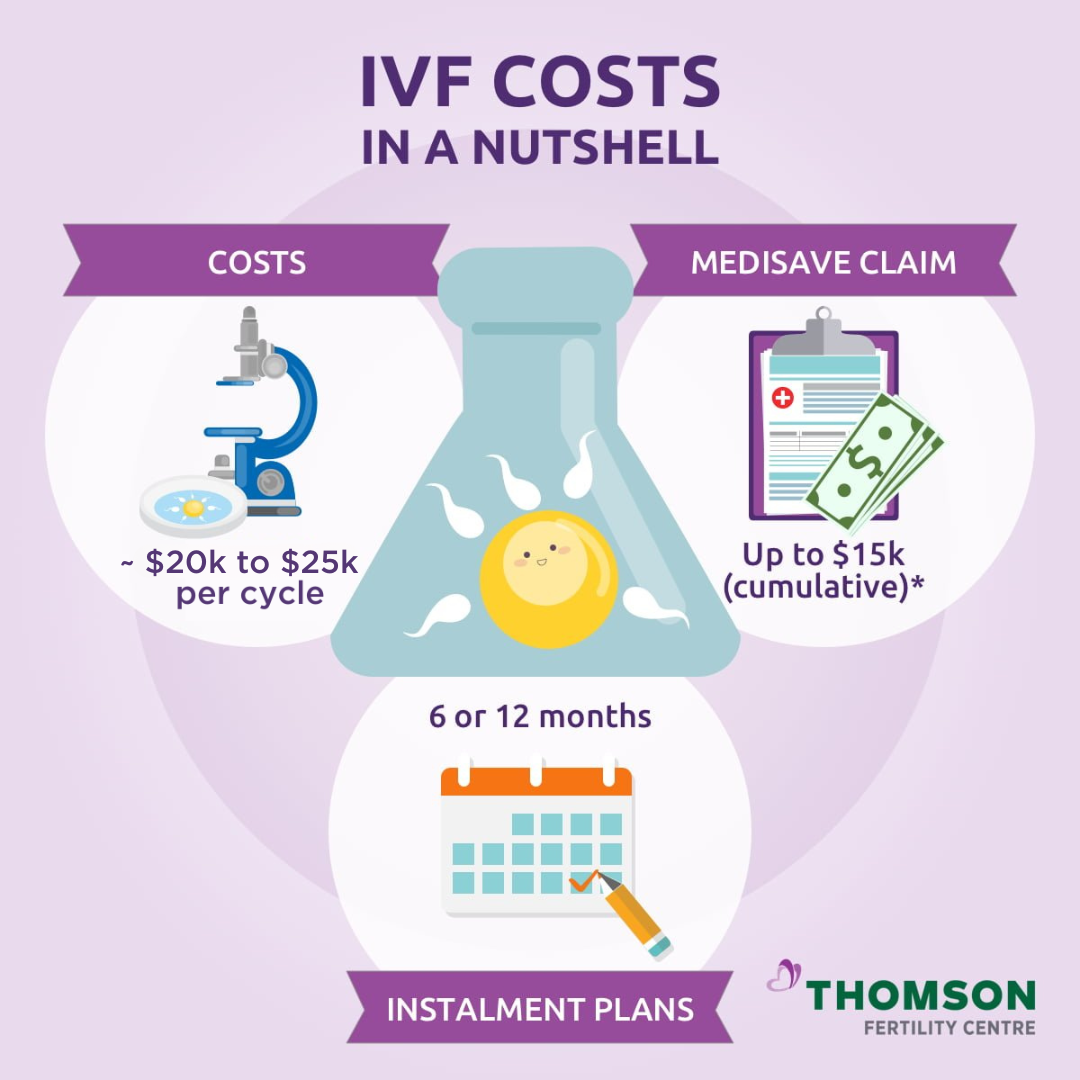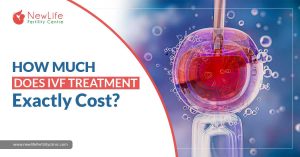How Much Does IVF Cost? A Deep Dive into Prices, Hidden Fees, and Real-Life Tips
So, you’re thinking about in vitro fertilization (IVF). Maybe you’ve been trying to start a family for a while, or perhaps you’re exploring options to make your dream of parenthood come true. Whatever brought you here, one question probably looms large in your mind: How much does IVF cost? It’s a big deal, right? The price tag can feel like a mystery box—sometimes exciting, often overwhelming. Don’t worry, though—we’re going to unpack it all together. From the jaw-dropping numbers to the sneaky little fees nobody talks about, this guide is your roadmap to understanding IVF costs in plain, everyday language.
By the time you’re done reading, you’ll know the average price, the extras that can pile up, and some clever ways to make it more affordable. Plus, I’ll sprinkle in some quirky facts, real-life stories, and the latest research to keep things interesting. Let’s dive in!
The Big Picture: What’s the Average Cost of IVF?
IVF isn’t cheap—let’s get that out of the way first. In the United States, the average cost for one IVF cycle (that’s one full round of treatment) hovers between $12,000 and $15,000, according to the American Society for Reproductive Medicine (ASRM). But here’s the kicker: that’s just the base price. It’s like buying a car—you might start with the sticker price, but then come the add-ons: taxes, fees, and maybe a fancy stereo. With IVF, those extras can push the total way higher.
Why So Pricey?
IVF is a high-tech process. Doctors retrieve eggs from your ovaries, mix them with sperm in a lab, grow the embryos, and then transfer them back into your uterus. It involves specialists, fancy equipment, and lots of lab time. Think of it like a sci-fi movie being filmed in your body—pretty cool, but it comes with a blockbuster budget.
A Quick Global Peek
Costs vary wildly around the world. In the UK, one cycle might run you about $4,000 to $6,000. In places like India or Mexico, it could dip as low as $2,500 to $5,000. Tempted to hop on a plane? Hold that thought—we’ll talk about “fertility tourism” later!
Fun Fact Fans Love
Did you know the first IVF baby, Louise Brown, was born in 1978? Her parents paid nothing—zero dollars—because it was an experimental procedure back then. Today, that same groundbreaking treatment would cost a small fortune. Talk about inflation!
Breaking Down the IVF Price Tag: What Are You Actually Paying For?
If you’re picturing one giant bill labeled “IVF,” think again. The cost is more like a grocery list—lots of little items that add up. Let’s break it down so you can see where your money’s going.
The Core Costs
Here’s what’s usually included in that $12,000-$15,000 base price:
- Monitoring: Ultrasounds and blood tests to track your hormones and egg growth (about $1,500-$2,000).
- Egg Retrieval: A quick surgery to collect eggs from your ovaries ($2,000-$3,000).
- Lab Fees: Fertilizing the eggs and growing embryos in a petri dish ($3,000-$5,000).
- Embryo Transfer: Placing the embryo into your uterus ($1,000-$2,000).
- Anesthesia: Keeping you comfy during egg retrieval ($500-$1,000).
The Sneaky Extras
These are the costs that catch people off guard. Posts on X often mention how these “hidden fees” turn IVF into a financial rollercoaster:
- Medications: Hormones to boost egg production can cost $3,000 to $5,000 per cycle—or more if you need extra doses. Some folks spend up to $10,000 here!
- Pre-IVF Testing: Bloodwork, semen analysis, and uterine checks might add $500 to $2,000 before you even start.
- Freezing Embryos: Got extras? Storing them costs $500-$1,000 upfront, plus $300-$600 per year.
- Genetic Testing (PGS/PGD): Screening embryos for health issues? That’s $2,000-$5,000 extra.
Real-Life Example
Meet Sarah, a 34-year-old teacher from Ohio. She told me her first IVF cycle rang up at $18,000. “I thought $12,000 sounded doable,” she said, “but the meds were $4,000 alone, and then they suggested freezing our two extra embryos for $800. It adds up fast!” Sarah’s story isn’t rare—many couples see their bill climb past $20,000.
Expert Insight
Dr. Jane Frederick, a fertility specialist in California, says, “Patients often underestimate medication costs. It’s the wild card—your body’s response dictates the price, and that’s hard to predict.”
Why Does IVF Cost So Much? The Insider Scoop
Ever wonder why IVF feels like a luxury purchase? It’s not just because it’s high-tech. Here’s what’s driving that price tag—and some tidbits you won’t find in every article.
The Science Factor
IVF isn’t a one-doctor show. You’ve got fertility specialists, embryologists, nurses, and lab techs all working together. Plus, the equipment—like incubators that mimic your body’s conditions—costs a fortune to buy and maintain. It’s like running a mini space station!
Success Rates Aren’t Guaranteed
Here’s a stat to chew on: the CDC says only about 33% of IVF cycles result in a live birth for women under 35. That drops to 10% for women over 40. Since it might take two or three cycles (or more!) to get pregnant, the total cost can soar to $30,000-$50,000—or higher.
The Insurance Gap
Unlike a broken leg or the flu, infertility isn’t always seen as a “medical necessity” by insurance companies. Only 20 states in the U.S. have laws requiring some fertility coverage, and even then, IVF often isn’t fully covered. That leaves most people paying out of pocket.
Quirky Fact
In Sweden, researchers found that 1 in 8 women face infertility at some point. Yet their universal healthcare covers up to three IVF cycles for free. Imagine that—a baby on the house!
How Many Cycles Will You Need? The Million-Dollar Question
One cycle might not cut it. So, how do you figure out your real IVF cost? It’s all about your odds—and a little bit of luck.
Success by Age
Your age plays a huge role. Here’s a breakdown from the CDC (2021 data):
- Under 35: 33% success per cycle
- 35-37: 25%
- 38-40: 16%
- Over 40: 10%
So, if you’re 38, you might need three cycles to hit a 50/50 shot at a baby. That’s $36,000-$45,000 at the base rate, before extras.
Other Factors
- Health Conditions: PCOS, endometriosis, or low sperm count can mean more cycles—or pricier treatments like ICSI (adding $1,500-$3,000 per cycle).
- Lifestyle: Smoking or obesity can lower success rates, stretching out your journey.
Practical Tip
✔️ Ask for a Multi-Cycle Package. Some clinics offer deals—like three cycles for $25,000—saving you thousands if you need more than one shot.
❌ Don’t Assume One Try Is Enough. Budget for at least two cycles to be safe.
Hidden Costs Nobody Talks About
Beyond meds and lab fees, there are some curveballs that can hit your wallet—and your heart. Let’s shine a light on these.
Emotional Toll = Extra Spending
Infertility is tough. A 2024 study from Stanford found that women who don’t conceive after IVF are 48% more likely to need mental health meds five years later. Therapy or support groups? That’s $50-$200 per session.
Time Off Work
Egg retrieval and embryo transfer mean days off. If you don’t have paid leave, lost wages could add $500-$1,000 per cycle.
Travel Expenses
Live far from a clinic? Gas, flights, or hotels might tack on $200-$1,000. One X user said she drove 3 hours each way for appointments—gas alone cost her $300 per cycle!
Story Time
Jake, a 29-year-old mechanic, shared, “We spent $600 on a hotel near our clinic because the retrieval got scheduled last-minute. It’s stuff you don’t plan for.”
Can You Make IVF Cheaper? Money-Saving Hacks
Good news: you can cut costs without cutting corners. Here are some tried-and-true tricks, plus a few fresh ideas.
Shop Around
Clinic prices vary. A cycle in New York City might cost $18,000, while one in rural Texas could be $10,000. Call around—don’t be shy!
Insurance Hacks
✔️ Check Your Employer. Some big companies (like Starbucks or Amazon) offer IVF benefits—even for part-timers.
✔️ Move to a Mandate State. States like Massachusetts or Illinois require coverage. Relocating isn’t practical for everyone, but it’s an option.
Fertility Tourism
Countries like Spain or the Czech Republic offer IVF for $5,000-$7,000, including meds. Add travel costs, and it might still beat U.S. prices. Research clinics carefully—safety first!
Grants and Loans
- Baby Quest Foundation: Grants up to $15,000 for IVF.
- CNY Fertility: Offers in-house financing with cycles as low as $4,900.
- Credit Unions: Lower interest rates than banks for medical loans.
Expert Tip
Dr. Aimee Eyvazzadeh, aka the “Egg Whisperer,” advises, “Ask clinics if they have unused meds from other patients. Some donate leftovers—it’s a goldmine for savings.”
IVF Alternatives: Cheaper Options to Consider
IVF isn’t the only path to parenthood. Here’s how other treatments stack up—and when they might work for you.
Intrauterine Insemination (IUI)
- Cost: $300-$1,000 per cycle
- How It Works: Sperm is placed directly in your uterus.
- Best For: Mild infertility issues (e.g., low sperm motility).
- Success Rate: 10-20% per cycle.
Medications Alone
- Cost: $50-$500 per cycle
- How It Works: Pills like Clomid boost egg production.
- Best For: Irregular ovulation.
Adoption
- Cost: $20,000-$40,000 (one-time)
- Why Consider: No medical risks, guaranteed family growth.
Quick Comparison Table
| Option | Cost Per Try | Success Rate | Timeframe |
|---|---|---|---|
| IVF | $12K-$15K | 33% (under 35) | 1-3 months |
| IUI | $300-$1K | 10-20% | 1 month |
| Meds Only | $50-$500 | 5-15% | 1 month |
| Adoption | $20K-$40K | 100% | 6-18 months |
What’s New in 2025? Fresh Research and Trends
IVF isn’t standing still. Here’s what’s hot off the press as of February 28, 2025—and how it might affect your wallet.
Low-Cost Innovations
A 2023 study from the University of Colorado tested a $200 IVF kit that simplifies the lab process. It’s not widely available yet, but it could slash costs to 10-15% of today’s prices in the future.
Insurance Push
President Trump’s February 2025 Executive Order aims to “aggressively reduce IVF costs” for federal employees. Could this trickle down to private plans? Fingers crossed!
AI Boost
Clinics are using AI to pick the best embryos, boosting success rates by 5-10% in early trials. Fewer cycles = lower costs long-term.
Your IVF Budget: A Step-by-Step Plan
Ready to crunch some numbers? Here’s a simple guide to plan your IVF budget.
Step 1: Get a Quote
Call your clinic for a detailed estimate. Ask: “What’s included? What’s extra?”
Step 2: Factor in Meds
Estimate $3,000-$5,000, but get a personalized guess from your doctor based on your health.
Step 3: Plan for Multiple Cycles
Multiply your total by 2 or 3, depending on your age and odds.
Step 4: Add Hidden Costs
Budget $1,000-$2,000 for travel, time off, or emotional support.
Step 5: Explore Savings
Subtract any insurance, grants, or discounts you qualify for.
Example Calculation
- Base IVF: $14,000
- Meds: $4,000
- Two Cycles: $18,000 x 2 = $36,000
- Extras: $1,500
- Grant: -$5,000
- Total: $32,500
Real Stories: What IVF Costs Mean to Real People
Numbers are one thing—feelings are another. Here’s what folks like you have experienced.
The Highs and Lows
Lisa, 37, from Florida: “We spent $40,000 over three cycles. When our son was born, every penny felt worth it—but during the process, I cried over every bill.”
The Creative Hustle
Mike, 32, from Oregon: “We sold my old guitar and did a GoFundMe to cover our second cycle. It was humbling, but friends stepped up.”
The Unexpected Win
Tara, 41, from California: “Insurance denied us, but my new job covered 80% of our $22,000 cycle. Timing was everything!”
Your Turn: Let’s Talk About It
IVF costs are a journey—financially, emotionally, and physically. What’s your story? Have you found a clever way to save? Are you stuck on where to start? Drop a comment below—I’d love to hear from you! And if this guide helped, share it with someone who needs it. Let’s keep the conversation going—because no one should feel alone on this road.



